What is a tripod turnstile gate?
Tripod turnstile gate, also called waist high turnstile or tripod barrier turnstile gate, is a straightforward, affordable, and small waist-high access control turnstile with three rotating arms. It includes a chassis, a mechanism, and three blocking rods, offering automated access control that is dissuasive for heavily used areas. The automatic turnstile barrier uses precise movement position control to ensure that it operates more accurately and steadily. It is made of stainless steel in a contemporary form, offering a safe, stylish, and fashionable option for both indoor and outdoor applications. As an ideal crowd control solution for any location that needs effective crowd management, tripod turnstile barrier gate, on the other hand, simplify integration to access control and visitor management systems, and slows down pedestrian traffic flow to enable closer monitoring of entry by security guards.
The tripod turnstile boom barrier is suitable for the controlled admittance of persons to a building or to an otherwise enclosed or guarded area, comprising a body mounted on a rotatable and blockable axis, which body is provided with three arms extending from the body, the arms being oriented such that when rotation of the body is blocked, at least one of the arms is positioned to prevent passage, characterized in that the arms extend substantially horizontally or at an angle upwards from the body. The tripod turnstile control mechanism permits single-person access through the turnstile on the actuation of a release mechanism but will bar access to further persons passing through the turnstile until the release mechanism is again actuated.
Bidirectional tripod turnstile has been proven excellent as a means of controlling human thoroughfare, especially for example when the arms are maintained in their usual and operational state revolving as the turnstile rotates one after another into a thoroughfare-obstructing position by electromagnetic mechanisms. In the event of power failure or when the power is turned off on purpose, the arms will accordingly fold down out of the way into the state allowing continuous thorougfare subject to gravity. This provision prevents people from becoming trapped upstream of the gate when the power fails and allows them to escape freely past the open gate in an emergency.
How does a tripod turnstile work?
Tripod turnstile entry gate comprises three equiangular distances spaced barrier arms on a rotatable arm carrier which by means of a remote control barrier device can be prevented or permitted, respectively, to turn in at least one turning direction. Adjacent to the arm carrier there is also a control disk with a track formation extending around its periferi with recesses between triangular cam means, spring-biased positioning means can be derolled in said track formation and against said cam means in order always to keep one of the barrier arms oriented in its home position, i.e. in a horizontal locking position. The tripod gate barrier is normally in a closed stage meaning that a solenoid holds the mechanism for a turnstile in the home position of the barrier arms. When an admission signal appears in the passage system the solenoid is disconnected so that there can occur a rotation clockwise or counterclockwise in response to the type of control signal coming from the electronic equipment.
The tripod access control gate comes with a locking function which is normally disconnected meaning that the locking of the barrier arms of the turnstile when in the home position is mechanically released also in the absence of an admittance of an accepted signal (stand-by). When the signal is accepted or approved, only a sensor system and the electronic equipment will check that the passage has taken place and that the turnstile, with the aid of for example a spring and/or hydraulics, will assume the next home position. The automatic tripod gate system offers an excellent way to satisfy its purpose while at the same time having low manufacturing costs. The sensor system is constituted by a magnet strip which is read by at least one sensor and preferably in the shape of an adhesive tape attached to, for example, a home position disk. The mechanism is provided with a rubber damping unit which provides a soft breaking or dumping of the turnstile when its barrier arms are in their home positions. Thanks to this sensor system is achieved an indication confirming that the rotation of the turnstile barrier occurs in the intended direction. The system does also give the electronic equipment a response confirming that the person concerned has passed. When the home position has been reached after a passage confirmation, this solenoid used for the normally closed position will return to its released state.
If an effort to make an unpermitted passage is tried, the positioning system will to the electronic equipment supply an early indication which does in turn activate the solenoid concerned for the purpose of locking the turnstile via a control disc in the unpermitted direction but permitting return to the initial position. Thanks to the fact that the mechanical locking function for the turnstile is disconnected in the home positions of the automatic tripod gate system the current consumption is lower than when, in the normal way, the solenoids are kept activated, as is the case in prior art turnstile installations. In addition to the reduced current consumption, there is a significant increase in the useful life of the product according to the present invention. If desired, the barrier arms of the tripod barrier turnstile can be tiltable when in their home positions, so that, e.g. at a fire alarm, the locking arm is released to fall down from its horizontal position to a vertical evacuation position. In this type of design a solenoid is activated, e.g. in response to fire alarm or an evacuation alarm, and influences, via a spring-biased activation arm, a pin, mounted in the lockbridge of the arm mechanism which is in turn normally is held in position by a spring force. This results in the arm becoming released and falling from its horizontal position to a vertical evacuation position. When resetting shall take place, the arm is manually brought to its horizontal position were fixation occurs automatically. This offers a simple and cheap solution in contrast to what is the case according to the prior art.
The three different types of tripod turnstiles can be classified according to how they operate, including fully automatic tripod turnstile, semi-automatic tripod turnstile, and mechanic tripod turnstile
The differences between fully automatic and semi-automatic tripod turnstile
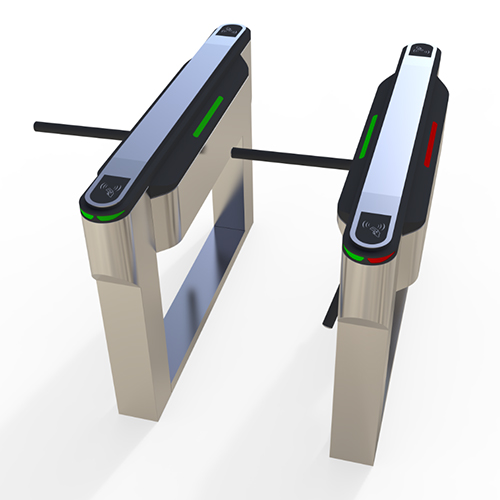
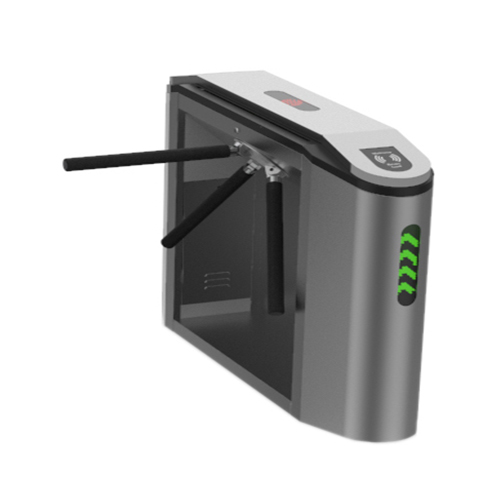
A semi-automatic tripod turnstile gate uses a mechanical anti-tailgating design and two electromagnets to successfully realize that only one person may pass at a time. It also has a specific transmission and locking system to manage entry and exit. After the credential has been approved, the movement’s positioning arm is released, the brake lever is gently pushed to rotate 120 degrees, the electromagnet causes the unlocking arm to unlock, the release brake lever to rotate in one direction, and the user is then able to pass through the passage. The mechanical and electrical control locking structure design prevents illegal bumping and reverse passage if the credential is rejected, cancels authorization for illegal intrusion in a preset time, and inhibits passage if the credential is rejected The waist-high semi-automatic tripod turnstile has an escape control mechanism. When the power is off in an emergency, the central brake lever will automatically lower, making it easy for people to flee quickly and safeguarding personal safety all around.
A fully automatic tripod turnstile gate is an improved version of the semi-automatic tripod turnstile and is the perfect combination of mechanics and electronics. In general, such a fully automatic tripod gate is equipped with a motor that performs all of the turnstile’s functions, controlling the flow of traffic through a single turnstile. As soon as the credential is accepted, the brake lever moves forward 15° to 20°, instructing users to move it slightly forward before passing. The motor then drives the brake lever to move forward smoothly.
Such a fully automatic turnstile will cancel the access within the specified time if the credential is rejected, and the brake lever will be returned to the home position. The mechanical and electrical control locking structure’s design precludes both anti-illegal infiltrations and reverse passage in the event of an illegal intrusion, as well as both at the same time in the event of an alarm. When powered off and on again, it automatically raises its center brake lever and releases its central brake lever. It is very convenient to use because the motor totally drives the rotation of the brake lever. Such an access control turnstile is simple to use and maintain because it is built with a fault self-check and alarm function.
A fully automatic tripod turnstile gate also offers a number of working mode choices that let you set up either single- or bidirectional traffic. The control panel’s keys can be used to change the working mode; The fully automatic tripod turnstile is also appropriate for a variety of public spaces because of its attractive appearance, rust-proof construction, steady operation, low noise, small mechanical gap, lack of impact, anti-collision buffer, and humanized design.
What are the surface treatments for tripod turnstiles available?
In general, there are 3 typical surface treatments available, including
1. Stainless steel: excellent for use outdoors and in harsh settings since it does not corrode, rust, or discolor.
2. Powder-coated steel: It has a variety of bespoke colors to suit various applications and is durable enough to withstand most scratching and severe use.
3. Galvanized Steel: It offers perfect protection against corrosion and stands up well to water exposure, and it is an effective finish for outdoor environments.
They are different in cost. It is important to determine the correct surface treatment by some factors, including the application situation, and the environment.
What is the protection class of tripod turnstile?
The protection class of tripod turnstile is IP54
What is the size of the tripod turnstile gate?
In general, the size of the vertical tripod turnstile is 420mm (Length) x 330mm ( Width) x 980mm (Height), and the bridge tripod turnstile is 1200 ~ 1400mm (Length) x 280mm ( Width) x 980mm (Height). Of course, as a professional turnstile manufacturer, we can customize turnstile solutions as per the specific requirements.
What is the lifespan of a turnstile?
In general, the lifespan of a tripod turnstile gate is 5 million times.
What is tripod turnstile material?
In general, the standard tripod turnstile is made of #304 stainless sheet for standard usage. For the applications of corrosive environments, #316 stainless sheet will be a better option. Sometimes, we use #201 stainless sheet for an economic solution if acceptable.
What are the advantages of a tripod turnstile?
1. Effectively manage only one person at a time thanks to its comparatively high anti-tailgating design.
2. Provide cost-effective operation, a single tripod turnstile gate forms a lane.
3. Compatible with a variety of verification tools, security systems, etc.
4. Simple to use due to its widespread use and straightforward design.
5. Drop-arm mechanism permits passage during power outages or alarms
6. Locking side and top cabinet for easy servicing and placement of activation readers
7. Regulates the flow of people with ease, even during the busiest periods of the day
8. Easy installation on finished floor surfaces, optional on unfinished surfaces
What are the disadvantages of tripod turnstile?
1. The tripod turnstile is bulky owing to the rotating construction made of mutually integrated tubes, the form of which is a cone that unavoidably occupies more space than the route regulated by such turnstiles.
2. The turnstile device does not provide sufficient space, making it hard for anyone using a wheelchair or a baggage trolley to pass.
3. When entering, the users who press the turnstile arms tend to apply a significant load to the release mechanism. Damage can be caused to the mechanism, particularly when a load is being applied to the arms at the same time as the release mechanism is being operated.
4. The tripod turnstile control mechanism includes a hub fixed to rotate with the turnstile arms and some form of release mechanism which is engagable with or disengaged from the hub. The diameter of the hub is generally significantly less than the diameter of the rotational arc of the outer ends of the turnstile arms. Thus, due to the principle of mechanical advantage, the load applied to the release mechanism is significantly larger than the load applied to the arms by the person pressing against the arms. Where the release mechanism comprises a solenoid or like electrically operated release catch it will need to be relatively powerful to overcome the load applied to it in this manner. It is often found that the release mechanism will fail over a period of time.
5. The rotation of the turnstile is not damped in any significant manner. Thus, when persons are passing through the turnstile and rotate the turnstile arms on their way through, the release mechanism is placed under undue strain as it clicks into its locked position, which results in early failure of the control mechanism.
6. The arms of a semi-automatic tripod turnstile must be manually shifted back into their operational position after being powered on again.
7. Tripod turnstile’s design results in low security and sluggish transit rates.
8. Tripod turnstiles do not include optical sensors to detect unauthorized attempts to pass through and raise an alert, unlike optical turnstiles.
What is the warranty for the tripod turnstile?
In general, we offer a 2-year / 24-month warranty, and a longer warranty period is available with extra charges
What is the tripod turnstile price?
The cost is determined by many factors, including the material (#201, #304, or #316 stainless sheet); the stainless sheet thickness; the surface treatment (powder coating or galvanize); the chassis length ( 1200mm or 1400mm)., etc
What is the package of tripod turnstile?
Tripod turnstiles are packed by standard wooden export cartons to fully prevent them from being damaged during transportation
How to deliver the tripod turnstiles?
For mass orders, we deliver them by sea which is the most economical way. For Samples, they can be delivered by courier express or air
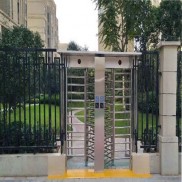 Double Lane Full Height Turnstile Gate for Residential Area
Double Lane Full Height Turnstile Gate for Residential Area
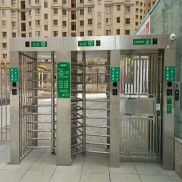 Dual Lane Tandem Full Height Turnstile Gate for Industry Park
Dual Lane Tandem Full Height Turnstile Gate for Industry Park
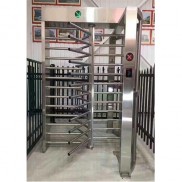 Single Full Height Security Turnstile for Office Buildings
Single Full Height Security Turnstile for Office Buildings
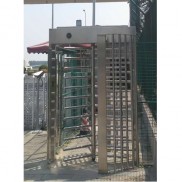 Motorised Double Full-Height Turnstile for Office Buildings
Motorised Double Full-Height Turnstile for Office Buildings







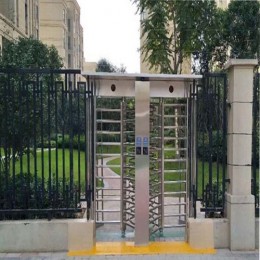
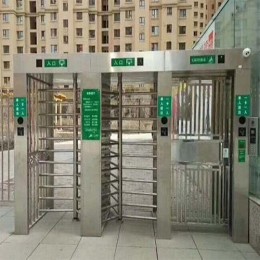



Please leave a message if you are interested in this model